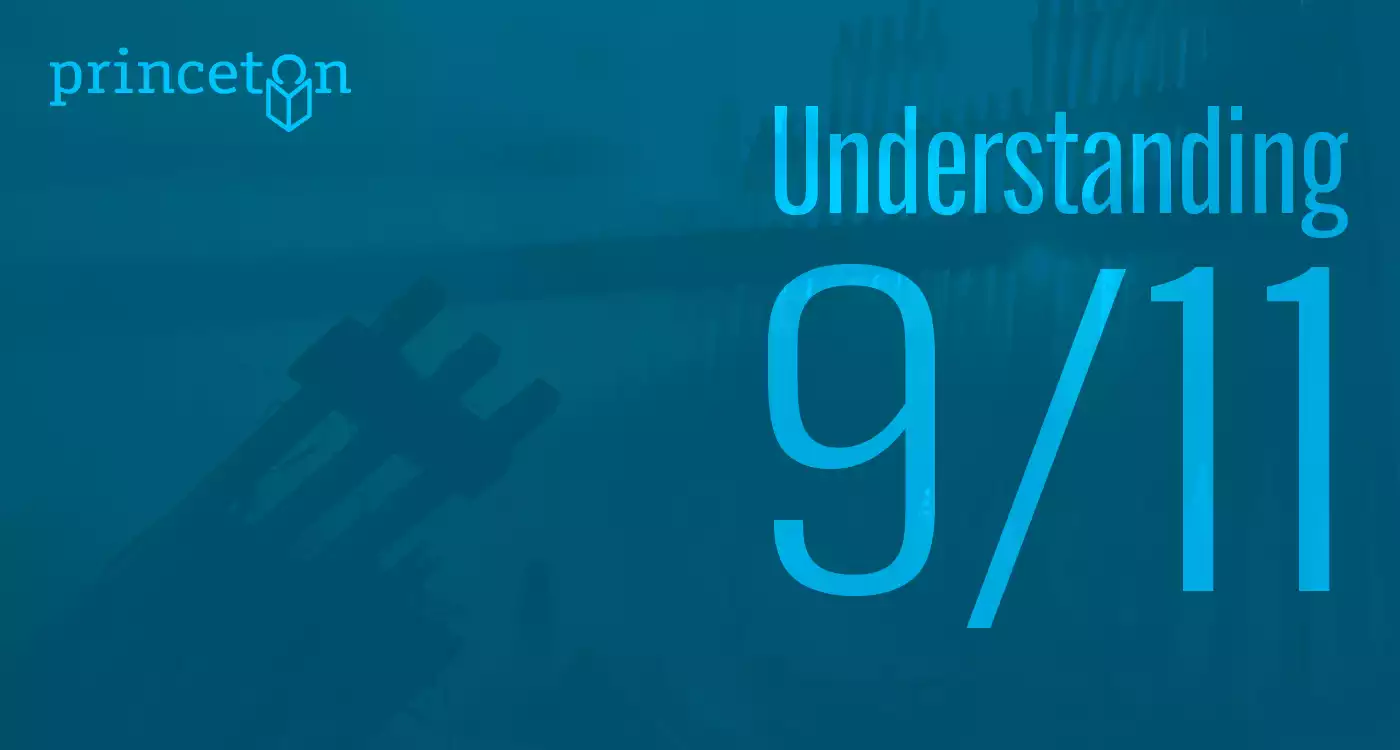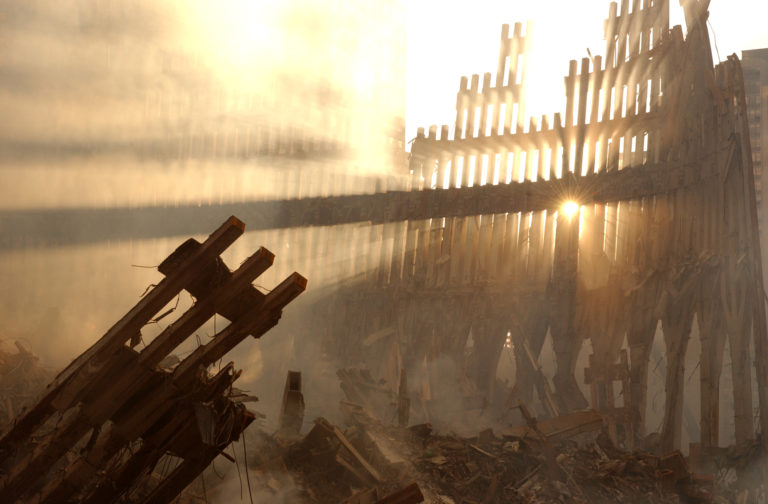
Overview
On Sept. 11, 2001, terrorists hijacked four commercial airliners. Two were crashed into the North and South Towers of the World Trade Center in New York City and the third was crashed into the Pentagon in Arlington, Virginia. The fourth was brought down in a field in Shanksville, Pennsylvania, after passengers fought back against the hijackers. The attacks resulted in the deaths of nearly 3,000 people and continue to shape our world.
Learn about the 9/11 attacks, their context and their legacy via the resources below.

#learn
Learn about 9/11
See below for a list of nonfiction resources about 9/11, the roots of the attacks and their continued impact. All books and documentaries are available in the library’s collection.
There are also a number of reliable sources online to learn about the history of 9/11. These include:
- Interactive web timelines from the National September 11 Memorial & Museum
- “September 11 attacks” entry in Brittanica
- The 9/11 Commission Report by the National Commission of Terrorist Attacks upon the United States
- The September 11 Digital Archive
#programs
Programs at the Library
To listen to an oral history from a Princeton resident that references 9/11, visit the Voices of Princeton website.
#educators
Resources for Educators
Teaching about 9/11 can be challenging, especially given the nature of the event and the proximity of the anniversary to the beginning of the school year. See the lesson plans below for potential starting points.
- Lesson plans from the National September 11 Memorial & Museum
- 9/11 Primer from the National September 11 Memorial & Museum
- “Covering a Catastrophe: Comparing 9/11 Coverage” lesson plan from NewseumEd
- “9/11 and the Constitution” lesson plan from the Center for Civic Education
- Resources about 9/11 from BrainPop
- “9/11 Anniversary Teaching Guide” from the Morningside Center for Teaching Social Responsibility
- Short oral histories recorded for the StoryCorps September 11th Initiative
